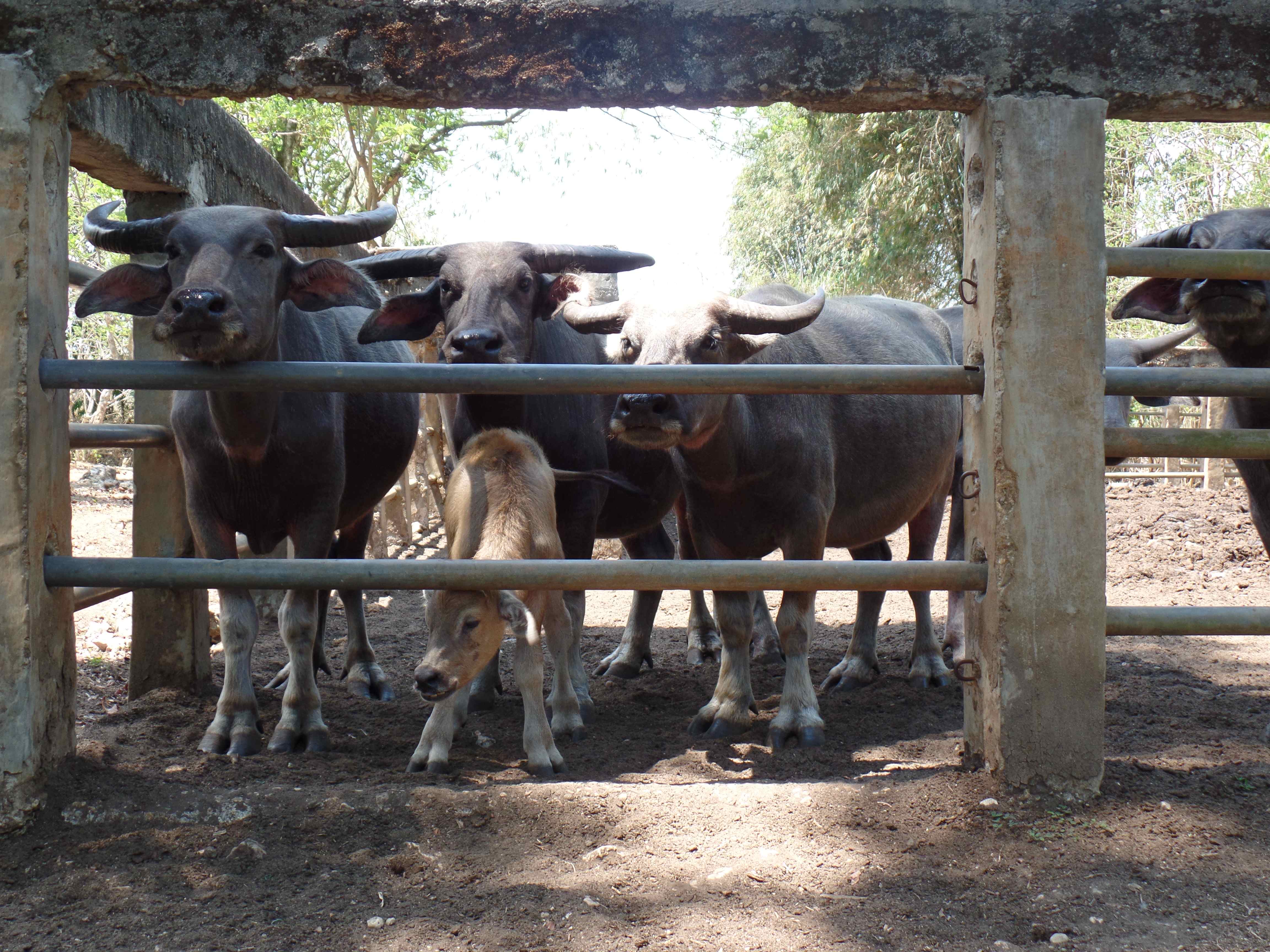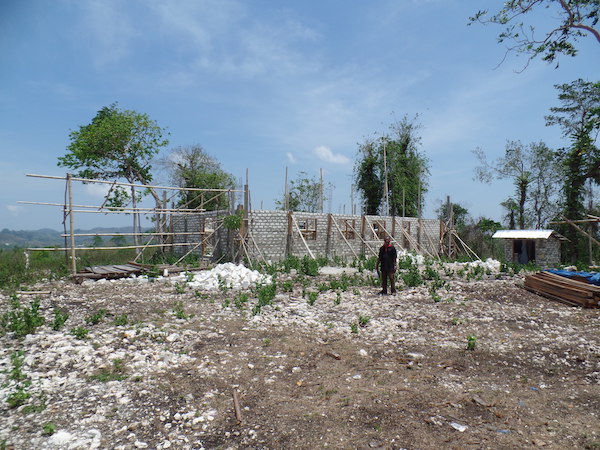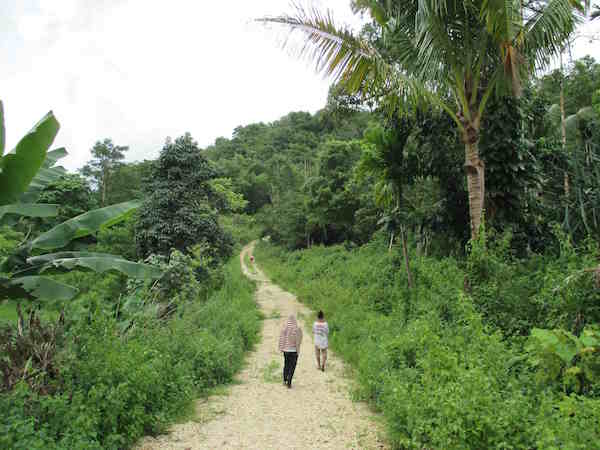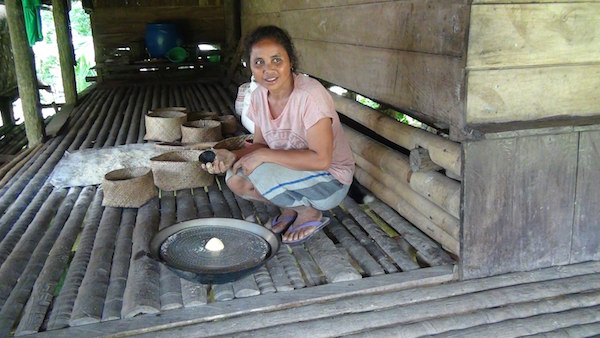Jacqueline Vel
In April 2015, the Indonesian Government commenced the first period of implementation for the new Village Law. This Law (No. 6/2014) comprises a new phase in decentralisation that provides more autonomy to village governments. The law brings major changes to how village government is run. Crucially, it facilitates a large flow of money from the central government straight to Indonesia’s 74,000 villages, bypassing higher levels of government. In theory, more decision-making authority for lower-level governments, with larger budgets at their disposal, will bring economic development and people’s empowerment.
Critics doubt whether the new institutional arrangements will serve the interests of the majority in the village; it may in the end just provide a new source of income to the elites. Indeed, research on district government budgets showed that in 2012 nearly a third of Indonesia’s districts spent more than half of their budgets on wages and government offices, not on public services or economic development activities. Meanwhile, 11 per cent of the national population still lives in poverty, and in rural eastern Indonesia the poverty rate is double the national average. Since Indonesia introduced sweeping decentralisation laws in 1999, it has been clear that the reality in the field does not always corresponded with decentralisation theory.
How will the increased transfer of money to the villages affect their local political economy? Will the budgets be spent on different sorts of public projects, now that the villages can decide on funding allocations themselves? What are villagers’ own investment priorities? And will the influx of cash really serve to alleviate poverty in Indonesia’s most needy villages?
Poor or cashless
With these questions in mind I went to the Matawai Kajawi village on Sumba Island in eastern Indonesia. I lived here for six years in the 1980s (back then it was called Lawonda) and have followed developments ever since. Matawai Kajawi is part of Central Sumba district, where all villages are officially classified as ‘poor’. Ninety per cent of the population lives from subsistence agriculture and considers themselves to be ‘tani saja’ (just farmers). They grow rice in the valleys, and vegetables and other staple crops on the hill slopes. Most households have pigs and chicken, and the wealthier ones have horses and buffalo or cows.

The traditional social differentiation between nobility, free people and slaves has become less prominent compared with a new class distinction between the tani and the political class. The latter derive their income from the state in one way or the other – either formal government salaries, or mark ups and bribes related to government projects. Spatially, the political class reside in the district capital, or along the main road leading to their villages of origin. Although national level statistics are clear about the average poverty rates here, internally people make different, often more sophisticated and detailed, distinctions about who is poor and who is not. People with land and livestock are generally not considered poor by the community, but they can still suffer food shortages, and live in very simple houses without electricity. The one thing that is certain is that the tani have little or no cash.
Increasing the size of village funds
For years, district politicians have tried to benefit from decentralisation and from district budgets in particular. They lobby the central government to split up districts in order to create more administrative units entitled to their own budget transfer from the national government. Since decentralisation, the number of districts nation-wide has increased from 302 in 2002 to 413 in 2013. Villages are split for the same reason, anticipating the increasing village budgets through the new Village Law. The consequence is huge administrative fragmentation. In Central Sumba, the number of villages has increased by 50 per cent since 2010. The average number of inhabitants per village has dropped to 1000 people.
 The Village Head shows the new Village Office in Matawai Kajawi that is being built at the top of a hill formerly just used for herding buffalo - Jacqueline Vel, Sumba, November 2014.
The Village Head shows the new Village Office in Matawai Kajawi that is being built at the top of a hill formerly just used for herding buffalo - Jacqueline Vel, Sumba, November 2014.
In the predominantly cashless economies of villages like Matawai Kajawi, the influx of money for the village budget is a major change for the local economy. Every single village, new or old, is entitled to receive its Village Fund. Calculations are based on a national distribution formula. The lower the population, the smaller the budget allocation. However, the formula also includes other factors that work out positively for remote, poor villages, compared to the average of the district. For 2015, the Central Sumba district government calculated village budgets between Rp.460,000,000 and Rp.580,000,000 (between about A$44,400 to A$56,000). The consequence for Matawai Kajawi is that compared to last year the village budget will double to Rp.486,000,000. A former village head said that in 2003 the village fund was only Rp.7,000,000, whereas from 2006 onwards it was already around Rp.200,000,000. Newspapers predict a budget of Rp.1.4 billion per village once the law is fully implemented in 2018. On what is all this village money spent?
Cash for the cashless
Although economic development and people’s empowerment are the village budget priorities according to the Village Ministry’s regulation 5/2015, it is not yet clear how the increased village funds will benefit the poor and disadvantaged. Matawai Kajawi’s 2015 budget will be allocated for a 1.5 kilometre road, one hand tractor for the farmers group that does not have one yet, a drinking water system, and house improvement (iron roof sheets for 10 houses). The law allows 30 per cent of the budget to be used for the village government apparatus itself. In previous years that budget line was distributed down the hierarchy in decreasing amounts, down to ‘incentives’ of Rp.200,000 per month for women assisting the health clinic and members of the adat (traditional cultural) institutions. Although on paper the rights to incentives were clear, many complain that they have never received payments in practice.
The most visible public projects concern infrastructure: new schools, a health clinic, and several new roads so that villagers who have motorcycles can drive up to their homes. However, many of these projects fail, or end up stalled. One of the new roads in Matawai Kajawi’s neigbouring village leads up to the house of Dena and Yuli. They are poor farmers, who live virtually without cash. The government-funded construction project aimed to connect this area to the road that runs from the coast to the district capital. Dena helped dig the road and clear the land. The work was considered ‘community participation’, so Dena received no wage for his labour. He had hoped to earn some cash by selling wood and vegetables to people traveling along the road. However, the project budget expired before the road was finished, leaving a dead end just in front of Dena’s house.
 The budget for this new road expired before the work was finished. There is not much traffic on such a dead end road and weeds take over again - Jacqueline Vel, Sumba, April 2015.
The budget for this new road expired before the work was finished. There is not much traffic on such a dead end road and weeds take over again - Jacqueline Vel, Sumba, April 2015.
Investing locally or investing in ‘escape’?
Availability of money doesn’t necessarily lead to economic development in the rural areas of Sumba. Nearly all villages are now encouraged by district government officials to include ‘village enterprise’ in their budget. However, there are very few ideas about what these enterprises could produce, nor is there analysis about the current lack of village enterprise. Evaluations of previous activities indicate the barriers for economic development that need to be overcome. For example, the fact that Sumba is an island with a small population means that marketing options are limited. Selling village products usually requires marketing channels outside the village, or even exporting to other islands. Establishing a village business enterprise without a solid business plan is a crazy idea.
 The exceptional success case: this lady sells home-made traditional cakes for parties and government meetings and financed her son’s university education in Bali from the revenue - by Jacqueline Vel, Sumba, April 2015.
The exceptional success case: this lady sells home-made traditional cakes for parties and government meetings and financed her son’s university education in Bali from the revenue - by Jacqueline Vel, Sumba, April 2015.
Another reason why it is so hard to accomplish economic development in Central Sumba can be found in the character of the local economy. Instead of investing in small enterprises or agriculture, people in Central Sumba prefer to spend their savings – or credit if they can obtain a loan – to finance the education of their children. Some sell surplus rice, others sell livestock when children enter university. That preference was clear when a Rp.250 million credit fund entered Matawai Kajawi’s economy in 2014. Forty-three per cent of the loans were used for tertiary education purposes. Thirty-five per cent of borrowers inserted ‘working capital for a new business’ but in practice used it for consumptive purposes, while the remaining loans were used for house building, funeral costs, and buying a motorcycle. As has been noted in other rural areas of Indonesia, parents wish their children to be employed as civil servants, and investing in their education is the highest priority. In such a context pumping money into subsistence villages will not lead to development of the local economy. Instead the villagers invest in ‘escape options.’
Currently local support for implementing the Village Law concentrates on explaining the law and training people in how to make the reports. That will not be sufficient for achieving economic development in villages. Policy makers and village governments should focus more on ways to overcome the most severe local barriers to ending poverty in their villages. Trainings should include making realistic business plans for village enterprises. Targeting the poorest will require specific means. More research needs to be done into the potential effects of the cash influx into Indonesia’s villages, to answer important questions such as - will the excess cash accelerate local inflation? Will it increase the cleavage between tani and political class? And how can local governments ensure that more money means less poverty?
Jacqueline Vel (j.a.c.vel@law.leidenuniv.nl) is a researcher at KITLV and the Van Vollenhoven Institute in Leiden. She is coordinator of the collaborative project ‘Governance, Markets and Citizens’ of three social science and economics research programs concerned with contemporary developments in Indonesia.